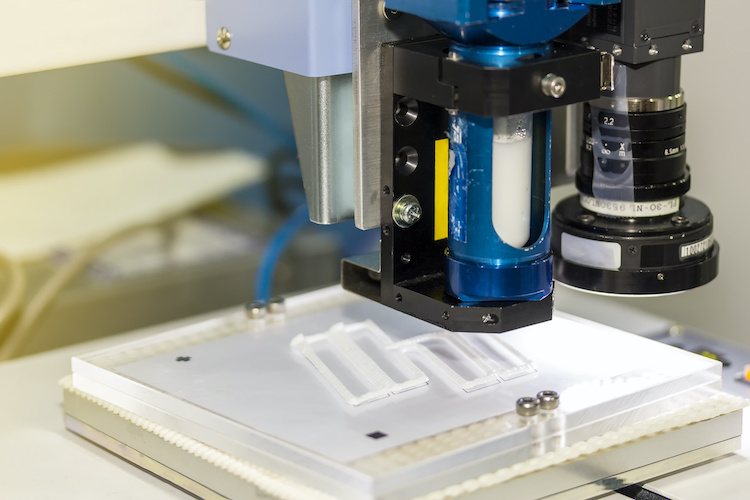5 Sealing Technologies Commonly Used by Manufacturers Today
Sealants are formulated with an elastomer that contains inert filler material giving it the elongation and flexibility properties. They have a paste-like consistency that helps in filling gaps between substrates.
Today many adhesive technologies can be modified into sealants, which fall between low-strength caulks and putties and higher-strength adhesives.
So, what common sealing technologies do most manufacturers use the most nowadays? In this post, you’ll learn the different sealing technologies used nowadays.
1. Polymer-Based Sealants
These products include polyester, polysulfide, polyamide, polyurethane, and vinyl sealants, usually cured in ambient temperature, anaerobic, or thermal curing.

Polymer sealants are ideal for moving or expansion joints, forming permanently flexible seals. Bridge joints and brickwork use polymer seals for capping glazing purposes.
You can always source polymer-based sealants from an Industrial and Marine Coating Manufacturer.
Here are the good-to-know things about polymer sealing technologies:
End-users of sealing technologies use a wide array of adhesive and sealant products such as two-part epoxies and urethanes for general composite bonding, flexible urethanes and epoxies, toughened epoxies for durability and high strength, acrylics for bonding metals and plastics, and low surface energy acrylics to bond polyolefins.
The secret to great composite bonding is choosing the right adhesive. End users or manufacturers that require sealing technologies should always ask for helpful advice for desired specific applications.
Fiber-reinforced polymer matrix composites use adhesive and sealing technologies in manufacturing parts or components of automotive or car manufacturing, aerospace, military, marine, and sport and leisure industries.
2. Epoxy Sealants
An epoxy sealant is the best solution for manufacturing items that would require extreme toughness and strength. Similar to epoxy adhesives, epoxy sealants consist of two-component systems, including a hardener and a resin mixed before application.
They are cured at room temperature. Thermosetting epoxies usually need additional heat to harden.
Epoxies are one of the few sealants with exceptional adhesive properties. That’s why they are used in different industries, such as aviation, marine, and automotive. Also, epoxies provide incredible electrical insulation, which makes them applicable for electronics.
Here are some important information about the latest epoxy sealing technologies:
Specialty epoxies are now available for high-performance coatings, encapsulants, adhesives, and composites. Specialty epoxy resins deliver enhanced performance characteristics, such as chemical resistance, cure speed, modulus, UV resistance, and thermal performance, much better than standard liquid epoxy resins.
One such example of a specialty epoxy blend is Bisphenol A/F Modified Phenol epoxy resins, which is low viscosity with non-crystallizing modified BPA resin. In filament winding applications, they make a great replacement for high-purity BPA resins.
Another type of specialty epoxy is Cycloaliphatic epoxy resin. It is UV resistant with lower viscosity than Standard BPA resin. It is used as an excellent sealing technology for metal components.
Modified BPA epoxy provides a faster cure in all temperatures. It eliminates blushing in slow curing epoxies. Low melt viscosity and high functionality resin are available for high-temperature applications.
Phenol epoxy resins have the lowest viscosity and blends to prevent crystallization near the monomeric product. It is used in industrial flooring, secondary linings of containment tanks, and highly corrosive applications.
3. Silicone-Based Sealants
Manufacturers love the strength, versatility, and affordability of silicone-based sealants. They have a life expectancy of about 10 to 20 years and are used in innovative manufacturing processes.
They exist in neutral cure silicone-based sealants and acetoxy. Silicone-based sealants are watertight and can resist chemicals and heat. That’s why silicone sealing systems serve in many industries.
Check out these types of silicone-based sealants:
NSF Certified Silicone Sealants: They are ideal caulk in manufacturing, installing, repair, and maintenance of foodservice equipment, including sinks, walls, counters, and backsplashes.
High-Temperature Silicone Sealants: They have high-temperature performance; used for sealing stove, furnace vent pipes, wood stove, and ovens.
Mildew Resistant Silicone Sealants: They inhibit the mildew growth; used in tile, sinks, tub, floor drains, shower stalls, and counters.
4. Acrylic Sealants
Acrylic sealant solutions are produced via catalytic reaction, and are curable through different methods. The lowest curing time is when acrylic sealants are thermally cured.
Acrylic sealants are odorless, flexible, and paintable with excellent bonding properties, perfect for sealing window frames and doors.
5. Phenolic Sealants
They are a combination of formaldehyde and phenol that seal joints and provide effective bonding with heat and temperature fluctuation resistance.
Phenolic sealants exist as liquid, films, and powder and are used in sealing and bonding plywood, in the appliance industry, and constructing buildings.
Sealing Properties
Regardless of the application, sealing solutions have three basic functions: filling a gap between substrates, forming a barrier, substrate adhesion, and maintaining sealing properties.
Sealing technologies commonly used by manufacturing companies nowadays include silicone sealants, acrylic sealants, phenolic sealants, epoxy sealants, and polymer-based sealants.
Promoted

